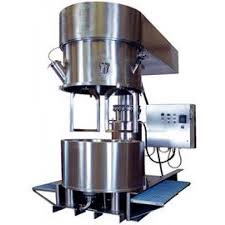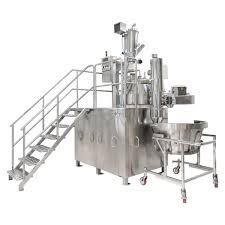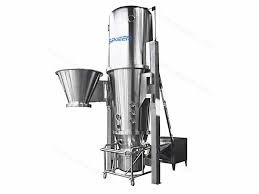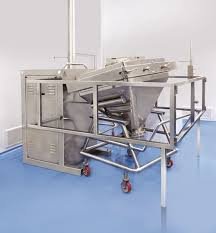Types of Blenders Used in Production and Their Specific Functions

Here’s a detailed explanation of Various Types of Blenders and Their Purpose in Production, particularly in the context of industries like pharmaceuticals, food processing, chemicals, and cosmetics:
Various Types of Blenders and Their Purpose in Production
In industrial production, blenders are critical for achieving consistent and uniform mixtures of powders, granules, liquids, or pastes. The selection of a blender depends on the physical properties of the materials, desired homogeneity, batch size, and processing requirements. Below are the major types of blenders used in production, along with their purposes:
1. Ribbon Blender
Description:
-
A horizontal, U-shaped trough with a rotating helical ribbon agitator.
-
The inner and outer ribbons move material in opposite directions to ensure uniform mixing.
Purpose:
-
Ideal for mixing dry powders, granules, and light pastes.
-
Widely used in the food industry (spices, baking mixes), pharmaceuticals, and chemicals.
Advantages:
-
Efficient blending of bulk materials.
-
Gentle mixing action prevents material degradation.
2. Paddle Blender
Description:
-
Similar to a ribbon blender but uses paddles instead of ribbons.
-
Provides more gentle mixing compared to ribbon types.
Purpose:
-
Used when a gentle mixing action is needed to prevent product damage.
-
Suitable for fragile or friable materials like nuts, cereals, and coated particles.
Advantages:
-
Gentle mixing.
-
Can handle higher moisture contents than ribbon blenders.
3. V-Blender (Twin-Shell Blender)
Description:
-
V-shaped container that rotates around a horizontal axis.
-
No internal agitators; mixing is achieved by the tumbling motion.
Purpose:
-
Suitable for dry, free-flowing powders that require gentle blending.
-
Common in pharmaceutical production for mixing active ingredients with excipients.
Advantages:
-
Minimal product attrition.
-
Easy to clean and suitable for hygienic processes.
4. Double Cone Blender
Description:
-
Two conical sections joined together and rotated along the horizontal axis.
-
Like the V-blender, it relies on gravity and tumbling for mixing.
Purpose:
-
Used for dry powder and granular blending.
-
Suitable for uniform mixing of large batch volumes.
Advantages:
-
Simple design and low maintenance.
-
Uniform blending for low-shear applications.
5. Planetary Mixer
Description:
-
Central agitator moves in an orbital motion while rotating on its own axis.
-
Similar to how planets move, hence the name.
Purpose:
-
Used for viscous pastes, creams, and semi-solid materials.
-
Common in food, cosmetic, and pharmaceutical industries.
Advantages:
-
Effective for thick or sticky substances.
-
Good for blending and kneading applications.
6. High-Shear Mixer / Granulator
Description:
-
Uses high-speed rotors or blades to mix materials aggressively.
-
Often includes a chopper to reduce particle size.
Purpose:
-
Designed for granulation, emulsification, and dispersion.
-
Used in pharmaceutical wet granulation and food emulsions (e.g., salad dressings).
Advantages:
-
Rapid mixing and granule formation.
-
Efficient for processing cohesive or wet materials.
7. Fluidized Bed Blender
Description:
-
Uses a stream of air or gas to suspend and mix particles in a fluidized state.
Purpose:
-
Ideal for coating, drying, and mixing fine powders.
-
Often used in pharmaceutical applications.
Advantages:
-
Uniform blending with minimal mechanical stress.
-
Can combine mixing and drying in one unit.
8. Tumbler Blender
Description:
-
A rotating drum or container that mixes materials through gentle tumbling.
-
Often cylindrical or hexagonal.
Purpose:
-
Used for delicate or heat-sensitive materials.
-
Ideal for low-energy blending of powders and granules.
Advantages:
-
Minimal heat generation.
-
Simple and cost-effective.
Conclusion
Choosing the right blender type is crucial for maintaining product quality, consistency, and efficiency in production. Factors such as material properties, batch size, sensitivity to heat or shear, and cleaning requirements must be considered. Understanding the strengths and limitations of each blender type helps ensure optimal mixing performance across various industries.
🎓 Discover one of the best Pharmaceutical Production courses available — click below to explore the course that’s shaping future Production skills.

